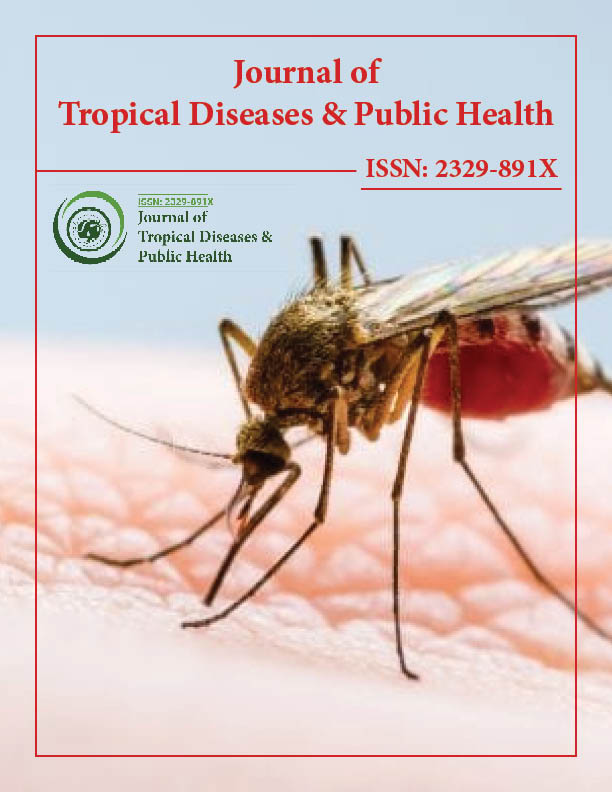Indexed In
- Open J Gate
- Academic Keys
- ResearchBible
- China National Knowledge Infrastructure (CNKI)
- Centre for Agriculture and Biosciences International (CABI)
- RefSeek
- Hamdard University
- EBSCO A-Z
- OCLC- WorldCat
- CABI full text
- Publons
- Geneva Foundation for Medical Education and Research
- Google Scholar
Useful Links
Share This Page
Journal Flyer

Open Access Journals
- Agri and Aquaculture
- Biochemistry
- Bioinformatics & Systems Biology
- Business & Management
- Chemistry
- Clinical Sciences
- Engineering
- Food & Nutrition
- General Science
- Genetics & Molecular Biology
- Immunology & Microbiology
- Medical Sciences
- Neuroscience & Psychology
- Nursing & Health Care
- Pharmaceutical Sciences
Perspective - (2025) Volume 13, Issue 1
Infectious Diseases as a Persistent Threat to Global Health and Development
Boylan Morton*Received: 24-Feb-2025, Manuscript No. JTD-25-29267; Editor assigned: 26-Feb-2025, Pre QC No. JTD-25-29267; Reviewed: 12-Mar-2025, QC No. JTD-25-29267; Revised: 19-Mar-2025, Manuscript No. JTD-25-29267; Published: 26-Mar-2025, DOI: 10.35241/2329-891X.25.13.465
Description
Infectious diseases are illnesses caused by pathogenic microorganisms such as bacteria, viruses, fungi, and parasites. These diseases can be spread, directly or indirectly, from one person to another, or through vectors such as insects or animals. Infectious diseases have significantly shaped human history, influencing population growth, migration patterns, economic development, and social structures. Despite advancements in medicine, hygiene and public health, infectious diseases remain a major global health challenge due to factors such as antimicrobial resistance, urbanization, international travel and climate change.
The transmission of infectious diseases can occur in various ways. Direct transmission involves physical contact between individuals, such as touching, kissing, or sexual activity. Indirect transmission may involve contaminated surfaces, water, food, or air. Vector-borne transmission occurs when a living organism, such as a mosquito or tick, carries the pathogen from one host to another. Some diseases are also zoonotic, meaning they originate in animals and jump to humans, often through direct contact or the consumption of animal products.
Prevention and control of infectious diseases rely heavily on public health measures. Vaccination is one of the most effective tools, providing immunity and reducing the spread of diseases such as measles, polio and hepatitis B. Sanitation and hygiene, including access to clean water, proper waste disposal, and handwashing, are crucial in reducing transmission. Surveillance systems help detect outbreaks early, allowing timely responses to contain the spread. Quarantine and isolation can prevent infected individuals from transmitting the disease to others, particularly in the case of highly contagious illnesses.
Antibiotics and antiviral medications are key in treating many infectious diseases. However, the misuse and overuse of antibiotics have led to the emergence of Antimicrobial Resistance (AMR), making once-treatable infections more difficult and expensive to manage. AMR is now recognized as a major global threat, requiring coordinated efforts in antimicrobial stewardship, research into new drugs, and better diagnostic tools.
Infectious diseases also have profound social and economic consequences. They can strain healthcare systems, reduce workforce productivity, increase poverty, and hinder development. In many low and middle income countries, infectious diseases remain leading causes of death, particularly among children and vulnerable populations. The burden of these diseases often falls disproportionately on those with limited access to healthcare, education, and nutritious food.
Education and community engagement are vital components of infectious disease control. Public awareness campaigns can promote preventive behaviors, reduce stigma, and encourage early treatment-seeking. Health education empowers individuals to make informed decisions and fosters trust in health authorities and interventions. The fight against infectious diseases will require sustained commitment, innovation, and global solidarity. Strengthening healthcare systems, investing in research and vaccine development, improving sanitation and living conditions, and addressing social determinants of health are essential strategies.
Conclusion
Infectious diseases remain a major challenge to global health, despite scientific and technological progress. Their prevention and control require an integrated approach that includes medical, environmental, and social strategies. By understanding the dynamics of infectious diseases and strengthening health systems worldwide, the global community can better protect human health and foster resilience against future outbreaks. The One Health approach, which recognizes the interconnectedness of human, animal and environmental health, offers a comprehensive framework for preventing prospect pandemics and managing infectious disease risks.
Citation: Morton B (2025). Infectious Diseases as a Persistent Threat to Global Health and Development. J Trop Dis. 13:465.
Copyright: © 2025 Morton B. This is an open-access article distributed under the terms of the Creative Commons Attribution License, which permits unrestricted use, distribution and reproduction in any medium, provided the original author and source are credited.

